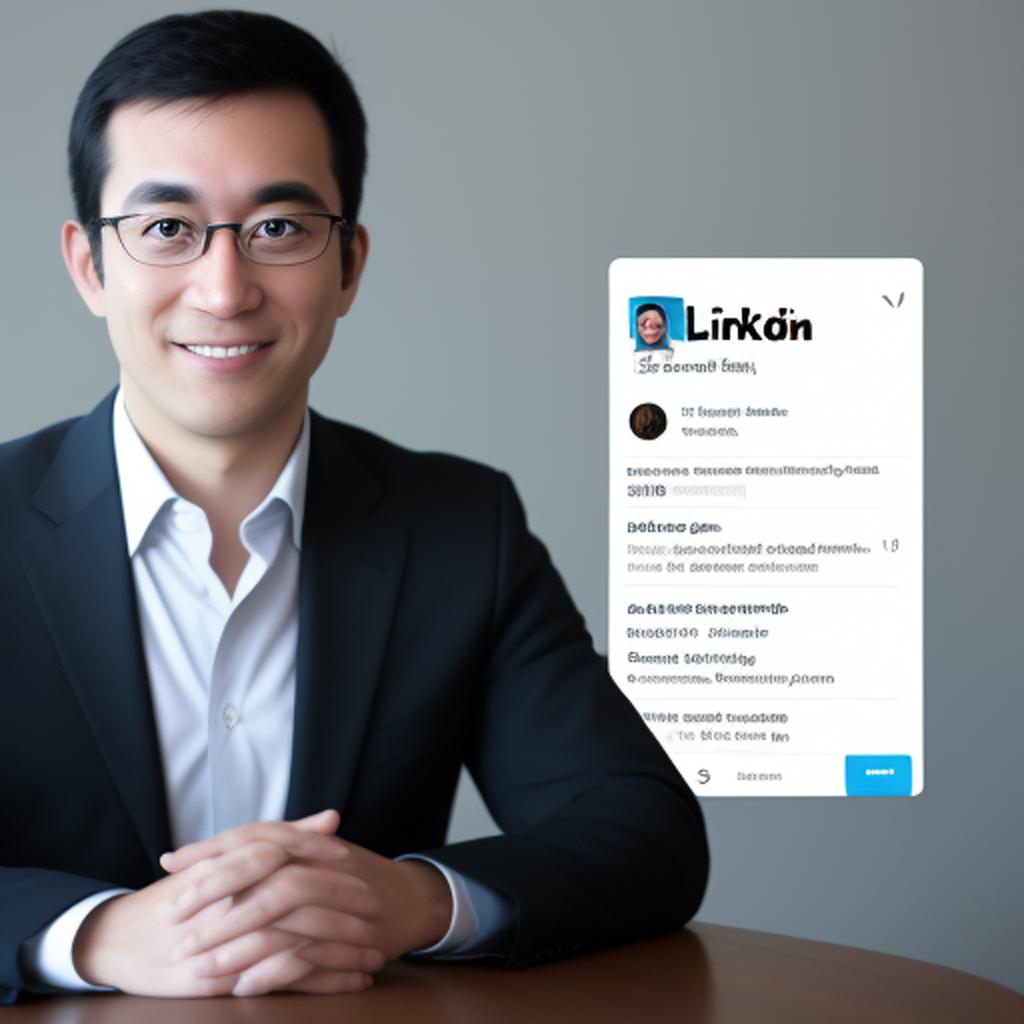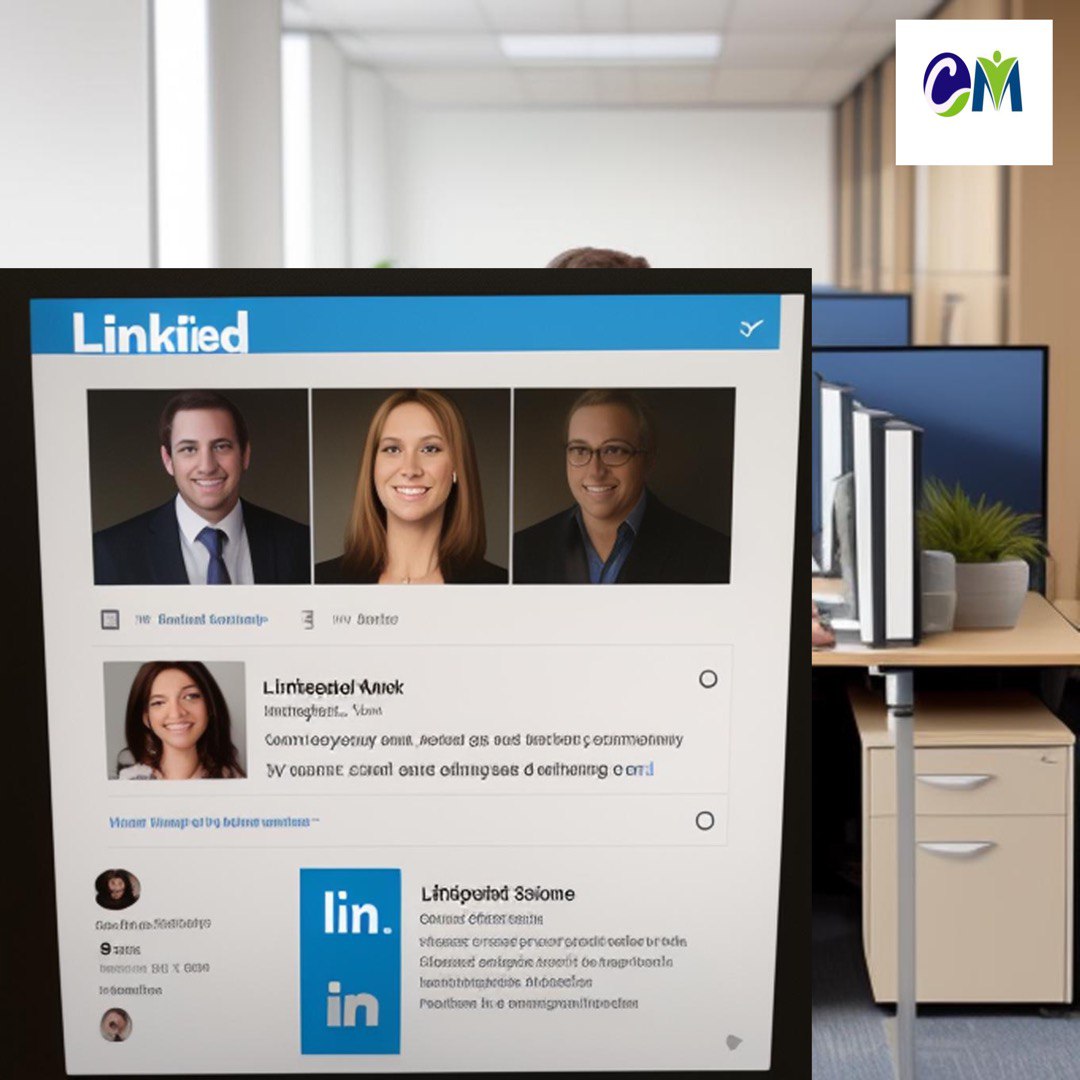
LinkedIn is a social networking platform designed specifically for professionals and businesses. It allows users to create a profile that serves as a digital representation of their professional identity, including information about their work experience, education, skills, and accomplishments.
LinkedIn provides a space for individuals to connect with colleagues, industry peers, and potential employers, facilitating networking and career development opportunities. Users can join groups, follow companies, and participate in discussions to stay updated on industry trends and connect with like-minded professionals. Additionally, LinkedIn offers job search and recruitment features, enabling users to search for job opportunities and for businesses to find suitable candidates for their vacancies. Overall, LinkedIn serves as a virtual professional community that fosters networking, knowledge sharing, and career growth.
LinkedIn has become an essential tool for professionals seeking new career opportunities. With millions of users and a vast network of connections,Having an optimized LinkedIn profile can significantly enhance your job search by increasing visibility to recruiters, showcasing your skills and experience, and networking with industry professionals. In this blog, we will explore effective strategies to optimize your LinkedIn profile and increase your chances of attracting recruiters and landing your dream job.
Strategies for Optimizing Your LinkedIn Profile
Create a Compelling Headline and Summary:
Your headline and summary are the first things recruiters notice when viewing your profile.To create a compelling headline and summary on LinkedIn for job seekers, focus on highlighting your expertise, industry, and career goals in the headline In your summary, showcase your unique skills, experiences, and achievements. Use keywords relevant to your target job to improve searchability and make your profile stand out., and use the summary section to showcase your unique skills, experiences, and accomplishments, using relevant keywords to improve searchability and make your profile stand out.
When crafting your headline, consider incorporating specific job titles or areas of expertise to attract the attention of recruiters and hiring managers. In the summary section, use a concise yet engaging narrative that highlights your key strengths, notable achievements, and career aspirations, demonstrating your value as a potential candidate. Remember to tailor your headline and summary to align with your target job and industry to make a strong impression on potential employers.
Showcase Relevant Experience and Skills
When showcasing relevant experience and skills on your LinkedIn profile, it is important to provide a comprehensive and detailed overview of your work history, highlighting your accomplishments, responsibilities, and the impact you made in each role, using action verbs and quantifying achievements whenever possible, while also featuring your key skills prominently to effectively demonstrate your qualifications to recruiters and hiring managers who may be searching for specific skills or expertise, thus increasing your chances of standing out among other candidates and positioning yourself as a strong contender for job opportunities in your desired field. Additionally, feature your key skills prominently, as they help recruiters quickly assess your qualifications.
Here are some of the relevant skills to help you build a strong profile on LinkedIn:
- Leadership and Management
- Project Management
- Communication Skills
- Teamwork and Collaboration
- Problem-Solving
- Analytical Skills
- Time Management
- Strategic Planning
- Sales and Marketing
- Customer Relationship Management (CRM)
- Data Analysis
- Research and Development
- Industry-Specific Knowledge (e.g., healthcare, finance, engineering)
- Negotiation Skills
- Technical Skills (e.g., programming languages, software proficiency)
- Financial Analysis and Reporting
- Presentation Skills
- Creative Thinking
- Social Media Marketing
- Public Speaking
- Adaptability and Flexibility
- Conflict Resolution
- Organizational Skills
- Networking
- Foreign Language Proficiency

Utilize a Professional Profile Photo
A professional profile photo significantly enhances your credibility. Dress professionally and choose a high-quality headshot that reflects your industry and the image you want to portray. Avoid using casual or cropped photos. Remember, first impressions matter, and a professional photo can help you make a positive impact..
To utilize a professional profile photo on LinkedIn means to select and display a high-quality image that presents you in a polished and appropriate manner. It is important to choose a photo that reflects your professionalism, credibility, and approachability to make a positive first impression on potential employers, colleagues, and connections. A professional profile photo typically includes a headshot or an image from the shoulders up, where you are dressed professionally, have good lighting, and maintain a friendly and confident expression. Avoid using casual or overly edited photos, group pictures, or images with distracting elements. By using a professional profile photo on LinkedIn, you demonstrate your commitment to presenting yourself in a professional manner and increase your chances of making meaningful connections and opportunities on the platform.
Build a Strong Network


Expand your network by connecting with professionals in your industry. Engage in meaningful conversations, join relevant groups, and participate in discussions. Actively seek endorsements and recommendations to strengthen your credibility. A robust network increases your visibility and opens doors to potential job opportunities.Building a strong network on LinkedIn involves actively connecting with professionals in your industry, engaging with their content, and nurturing relationships.
Here are some steps to help you build a strong network on LinkedIn:
- Complete your profile: Ensure that your profile is complete and up-to-date, including a professional photo, a compelling headline, a summary that highlights your expertise, and a detailed work history.
- Connect strategically: Connect with colleagues, classmates, industry peers, and professionals you have worked with or met at events. Personalize connection requests with a friendly and professional message explaining why you’d like to connect.
- Join relevant groups: Find and join LinkedIn groups related to your industry or areas of interest. Engage in discussions, share valuable insights, and connect with other group members.
- Engage with content: Regularly engage with content by liking, commenting, and sharing posts from your network. This helps you stay visible and build relationships with other professionals.
- Publish and share content: Share your own professional insights, articles, or industry-related content on LinkedIn’s publishing platform. This positions you as a thought leader and attracts engagement from your network.
- Attend events and webinars: Participate in virtual or in-person events, webinars, and conferences related to your industry. Connect with attendees and speakers afterward to expand your network further.
- Offer help and support: Be proactive in helping others by offering advice, resources, or introductions. Building a strong network is about giving and receiving support.
- Request recommendations: Ask colleagues, supervisors, or clients for recommendations on your LinkedIn profile. These testimonials help build credibility and trust.
- Stay active and consistent: Regularly update your profile, share content, and engage with your network to maintain an active presence on LinkedIn.
Remember, building a strong network takes time and effort. Be genuine, professional, and focused on building meaningful connections
Optimize Your Profile for Keywords:
Recruiters often search for candidates using specific keywords. Research industry-specific keywords and incorporate them naturally throughout your profile, especially in your headline, summary, work experience, and skills sections. This optimization improves your chances of appearing in relevant search results.
To optimize your profile for keywords on LinkedIn, follow these steps
- Research relevant keywords: Identify the keywords that are commonly used in your industry or field. These could include job titles, skills, certifications, or specific industry terms.
- Incorporate keywords in your headline: Your headline is one of the most visible sections on your profile. Include relevant keywords that accurately describe your professional expertise and specialization.
- Use keywords in your summary: Craft a compelling summary section that includes relevant keywords. Describe your skills, experience, and accomplishments using these keywords naturally within the text.
- Include keywords in your work experience: When describing your work experience, use keywords to highlight specific projects, achievements, and responsibilities. This helps search algorithms and recruiters find your profile when searching for those keywords.
- List skills and endorsements: Add a skills section to your profile and include relevant keywords as skills. Encourage colleagues and connections to endorse these skills, as endorsements add credibility to your profile.
- Optimize your job titles: Use industry-standard job titles that include relevant keywords. This helps recruiters and hiring managers find you when searching for specific roles.
- Customize your URL: Customize your LinkedIn profile URL to include your name or relevant keywords. This makes your profile more discoverable in search engine results.
- Share relevant content: Share articles, posts, or updates related to your industry or area of expertise. Use keywords in your content to further optimize your profile and demonstrate your knowledge.
- Engage with relevant groups: Join LinkedIn groups that are relevant to your industry or interests. Engage in discussions and share valuable insights using keywords where appropriate.
- Update your profile regularly: Keep your profile up-to-date with new skills, certifications, projects, or experiences. This shows that you are actively involved in your profession and helps you stay relevant in search results.
- Remember, while optimizing your profile for keywords is important, it’s equally essential to maintain a professional and engaging profile that accurately represents your skills and expertise
Engage with Content:

Engagement is key to building your professional brand on LinkedIn. Share insightful articles, comment on industry-related posts, and publish your own thought leadership content. Engaging with others demonstrates your expertise, builds credibility, and increases your visibility within your network and beyond. Engaging your LinkedIn profile with content is a great way to increase visibility, build relationships, and establish yourself as a thought leader in your industry.
Here’s tips on how to effectively engage your LinkedIn profile with content:
- Share valuable and relevant content: Share articles, blog posts, industry news, or insightful updates that are valuable to your network. Make sure the content is relevant to your industry or area of expertise and provides value to your connections.
- Create original content: Utilize LinkedIn’s publishing platform to write and share your own articles or long-form posts. This allows you to showcase your expertise, share insights, and start conversations with your network.
- Use engaging visuals: Incorporate eye-catching images, infographics, or videos in your content. Visuals can help grab attention and make your posts more engaging.
- Write compelling headlines: Craft attention-grabbing headlines for your content. A compelling headline increases the chances of your connections clicking and engaging with your posts.
- Engage with others’ content: Like, comment, and share posts from your network. Engaging with others’ content shows support, builds relationships, and increases your visibility among their connections.
- Respond to comments and messages: Be responsive to comments on your posts and messages from your connections. Engaging in conversations demonstrates your active presence and willingness to connect.
- Join and participate in relevant groups: Find and join LinkedIn groups related to your industry or interests. Engage in discussions, ask questions, and share valuable insights. This helps you connect with like-minded professionals and expand your network.
- Be consistent: Regularly post and engage with content to maintain an active presence on LinkedIn. Consistency is key to building a strong personal brand and staying visible to your network.
- Analyze and optimize: Keep an eye on the analytics provided by LinkedIn to understand which types of content perform well and resonate with your audience. Use this data to optimize your content strategy and adjust your approach accordingly.
Remember, the key to successfully engaging your LinkedIn profile with content is to provide value, be authentic, and actively participate in conversations. By doing so, you can establish yourself as a trusted resource and build meaningful relationships with your connections.
Request Recommendations and Endorsements:
Recommendations and endorsements from colleagues, supervisors, or clients validate your skills and expertise. Reach out to individuals you have worked closely with and kindly request their recommendation. Similarly, endorse others for their skills, and they may reciprocate. These endorsements and recommendations add credibility to your profile.
Keep Your Profile Updated:
Regularly update your LinkedIn profile to reflect your latest accomplishments, certifications, and projects. Stay active by sharing recent achievements, attending industry events, and adding new skills. An up-to-date profile shows that you are engaged and committed to professional growth.
Conclusion:
Optimizing your LinkedIn profile is crucial for maximizing your job search success. By implementing these strategies, you can present yourself as a qualified and desirable candidate to potential employers. Remember to maintain an active presence, engage with your network, and continuously update your profile to stay relevant. Leverage the power of LinkedIn to enhance your professional brand and secure new career opportunities. Good luck with your job search!






Leave a Reply